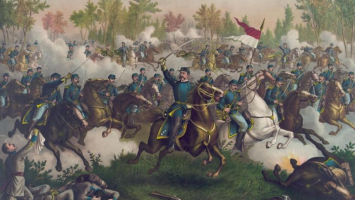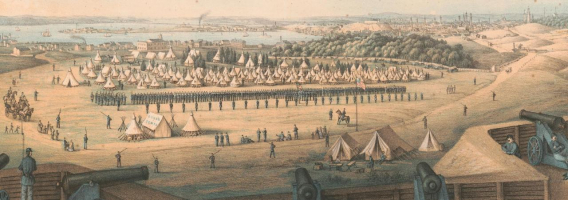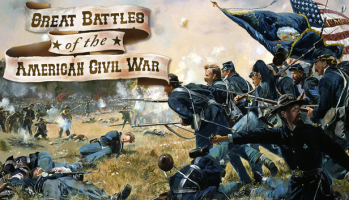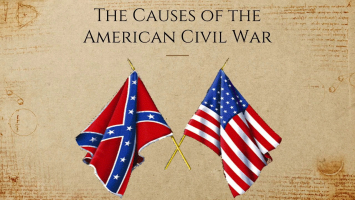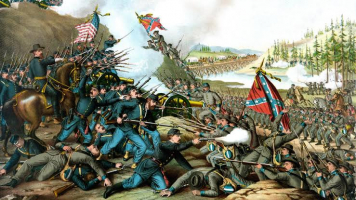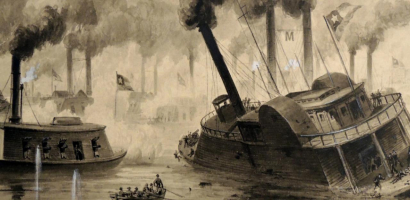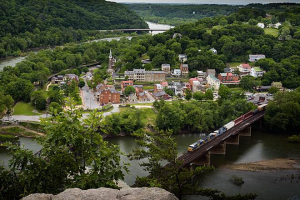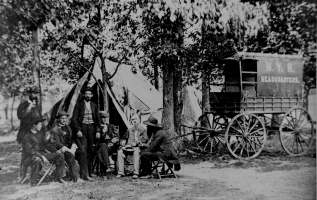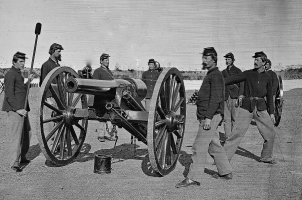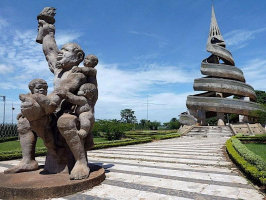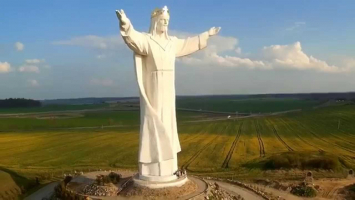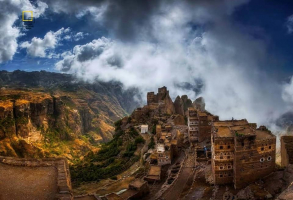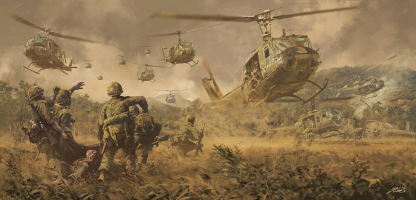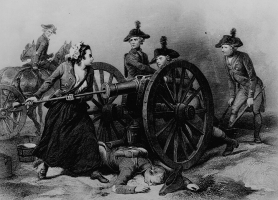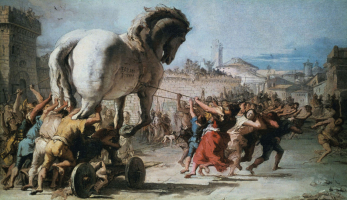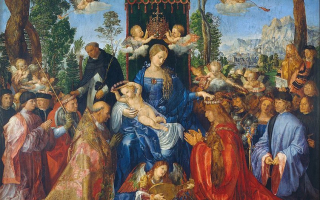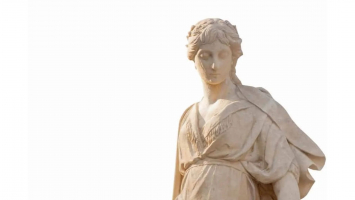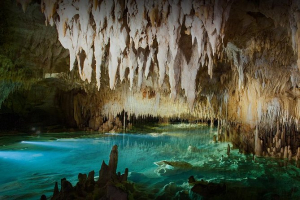Top 5 Famous Monuments, Markers, and Tablets on the Civil War Battlefield
The Civil War is a central event in America's historical consciousness. The North's victory in the conflict maintained the United States as a nation and put an ... read more...end to the slavery that had caused the country's division in the first place. However, between the end of the Napoleonic Wars in 1815 and the outbreak of World War I in 1914, the American Civil War was the bloodiest and costliest battle in the history of the Western world. These victories have cost 625,000 lives, roughly the same number of American troops who have perished in all the other conflicts in which this nation has been involved in the process. Therefore, to preserve and remind descendants of this historical marker, the Americans built thousands of monuments, markers, and tablets on the Civil War Battlefield. Below is a list of the Famous Monuments, Markers, and Tablets on the Civil War Battlefield that Toplist would like to introduce to readers.
-
One of the famous monuments, markers, and tablets on the Civil War Battlefield that Toplist would like to introduce is the State of Pennsylvania monument. It is located on Hancock Avenue near Pleasonton Avenue, south of Gettysburg. The monument was dedicated on September 27th, 1910, and the sculptures on each side of the arches were erected in April 1913.
The State of Pennsylvania monument is the largest monument on the Gettysburg battlefield. Inside there is a spiral staircase that leads visitors to the roof of the memorial where they can enjoy a panoramic view of the battlefield. Granite from North Carolina was used to create the monument, which was mounted on an iron and concrete frame. Sculptor Samuel Murray is the main designer for this work. Overcoming all odds, he created a 7,500-pound Winged Victory from melted Civil War cannons that stood atop the dome with a 110-foot-tall sword tip. In addition, he also created reliefs on each dome.
The base and interior of the monument are decorated with bronze tables of Pennsylvania regiments and batteries that fought bravely in the Battle of Gettysburg. Each table lists the company list of the officers and combatants of that unit. Over 34,000 Pennsylvanians who took part in the war have their names listed on the State of Pennsylvania monument. Each of the stone arches leading into the monument's interior is flanked by two bronze figures that are much bigger than life, and it is topped with a relief depicting infantry, cavalry, artillery, and signals. The group of bronze statues includes President Lincoln, Governor of Pennsylvania Curtin, and six of the most senior Pennsylvania generals during the battle at Gettysburg.
In sum, the State of Pennsylvania monument:
- Location: along Hancock Avenue near Humphreys Avenue and Pleasonton Avenue, south of Gettysburg.
- commemorates the 34,530 Pennsylvanians who fought at Gettysburg, 1,182 of them were killed, 3,177 were injured and 860 were listed as missing.
- is the largest monument on the Gettysburg battlefield.
Adams County Historical Society at Gettysburg 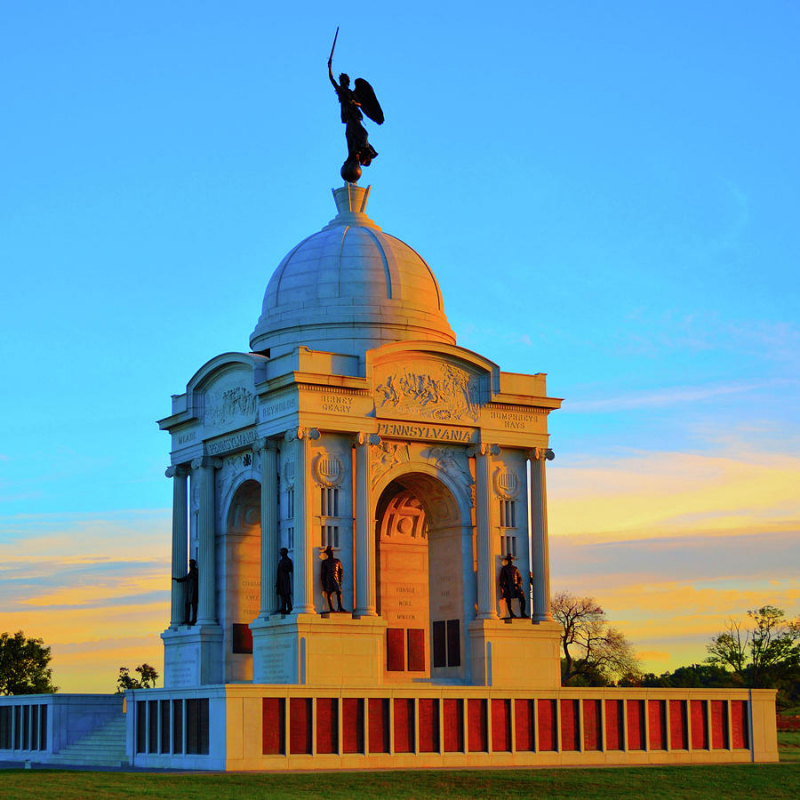
fineartamerica.com -
The monument to Union Sergeant Amos Humiston was constructed in 1993 in Gettysburg on Stratton Street. It is the only monument to an individual enlisted on the battlefields of Gettysburg.
From the table on the monument, it is recorded that near the site on July 1, 1863, a Union soldier was mortally wounded. When a local resident found the unidentified soldier's body, he also discovered a photograph of three children whom the soldier hugged affectionately. The news was quickly covered by the press, and copies of the photo were distributed and sold for charity. One of these went to Phylinda Humiston of Portville, New York, who realized that her husband, Sergeant Amos Humiston of Company C, New York's 154th Volunteer Squad, had been killed.
Knowing the story, Dr. Bournes made a special journey to New York to deliver the original photo to Amos's widow and children. The story became so famous and widespread that many sympathetic donations were used to establish the Soldiers' Orphanage in Gettysburg in 1866. Amos's wife, Humiston, moved to Gettysburg to serve as the orphanage's first patron. Amos' body was moved to Gettysburg National Cemetery and the monument to Union Sergeant Amos Humiston was built to mark the place where he died in 1993.
In short, the monument to Union Sergeant Amos Humiston:
- was constructed in 1993 in Gettysburg on Stratton Street.
- the table on the monument records the place where he died and holds in his hand a picture of his three children to show how sacred fatherhood is.
- the only monument to an individual enlisted on the battlefields of Gettysburg to commemorate the Union soldier, Amos Humiston.
John Fenzel 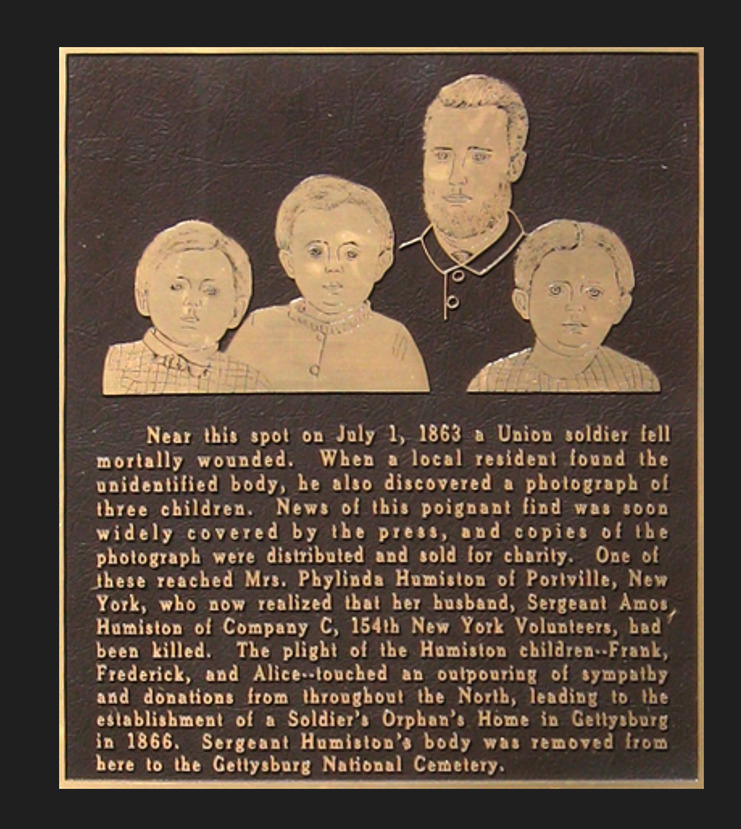
The tablet on the monument - gettysburg.stonesentinels.com -
The memorial commemorating the 2nd Maryland Infantry is located on Culp's Hill southeast of Gettysburg. A little distance to the west, in the saddle between higher and lower Culp's Hill, is a marker that depicts the size of the battalion's advance.
During the American Civil War, on July 1–3, 1863, Union and Confederate soldiers engaged in combat in the Battle of Gettysburg which featured the greatest forces of the whole conflict (104,000 Union men and 71,000 Confederate soldiers). The Confederate effort to invade the North was defeated in the conflict by the Union and resulted in the most thousands of deaths and injuries in the history of American wars. Nearly 6,600 soldiers were killed, 33,000 were wounded, and 12,000 were missing or captured. Therefore, this monument was built to honor the 2nd Maryland Infantry C.S.A., or 1st Maryland Infantry Battalion, who took part in the Battle of Gettysburg.
This was the first Confederate memorial erected on the battlefield, and the leaders of the battlefield commission met it with a considerable deal of opposition. In 1884, it was eventually given permission to be built and dedicated. Even though the unit's name at the time of the conflict was First Maryland Battalion, the commission mandated that it be named the "2nd Maryland Infantry". The rationale offered was that the First Maryland Potomac Home Brigade and First Maryland Eastern Shore were already two Union regiments with that designation, and the Confederate 1st Maryland Battalion had been renamed the Second Maryland Regiment in 1864. As the result, the memorial honoring the "2nd MD. Infantry C.S.A." was built.
In sum, the 2nd Maryland Infantry Monument:
- Location: South of Gettysburg on Culp’s Hill on the east side of Slocum Avenue about 300 yards north of the intersection with Geary Avenue.
- It was built and dedicated in 1884.
- To honor the 2nd Maryland Infantry C.S.A., or 1st Maryland Infantry Battalion, who took part in the Battle of Gettysburg.
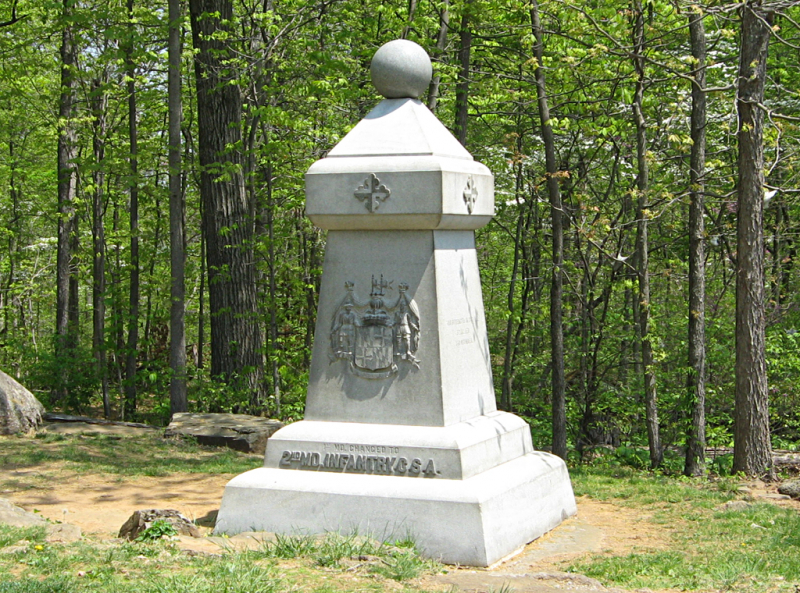
The front of the monument - gettysburg.stonesentinels.com 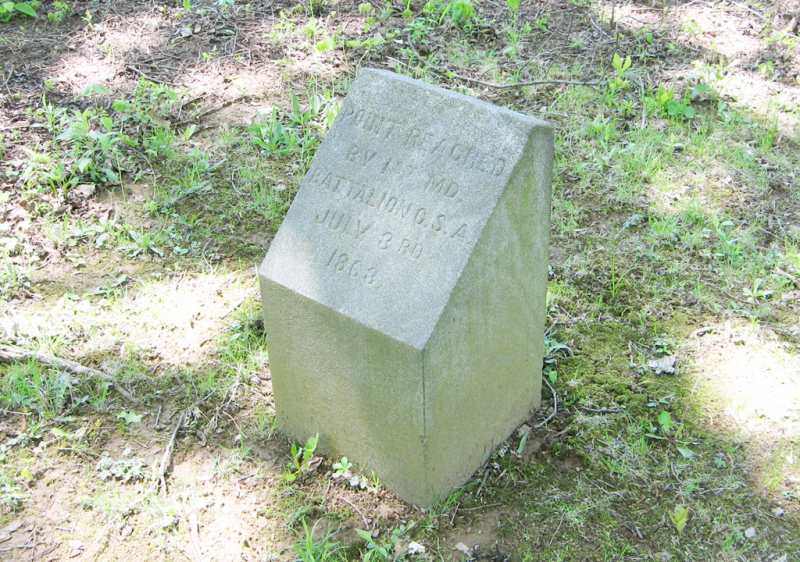
The marker showing the furthest advance of the battalion - gettysburg.stonesentinels.com -
The Confederate soldier monument, sometimes referred to as "The Boys Who Wore Gray," was built as a tribute to the Durham County soldiers who fought in the American Civil War on behalf of the Confederate States of America.
The monument included a bronze sculpture of a male Confederate soldier wearing a uniform and carrying a weapon on top of a granite foundation. Two lampposts and a pyramid made of four cannonballs were also placed on the plinth. On the base, there are inscriptions that write: In Memory of 'The Boys in Gray' on the front, 'This memorial erected by the people of Durham County' on the right, and 'Dedicated May 10th, 1924' on the left.
The monument was built in 1924 in Durham, North Carolina, in front of the Old Durham County Courthouse, and it was dedicated on May 10 of the same year. Construction of the memorial was paid for with public money, namely one-half of one percent of local county taxes through a provision of the state legislature. The monument was toppled and extensively damaged by protesters on August 14, 2017, as part of countrywide protests in response to the tragic attack on counter-protestors at the Unite the Right gathering in Charlottesville, Virginia.
To conclude, the Confederate soldier monument:
- was built on May 10th, 1924.
- to honor the Durham County soldiers who fought in the American Civil War.
- included a bronze sculpture, two lampposts, and a pyramid.
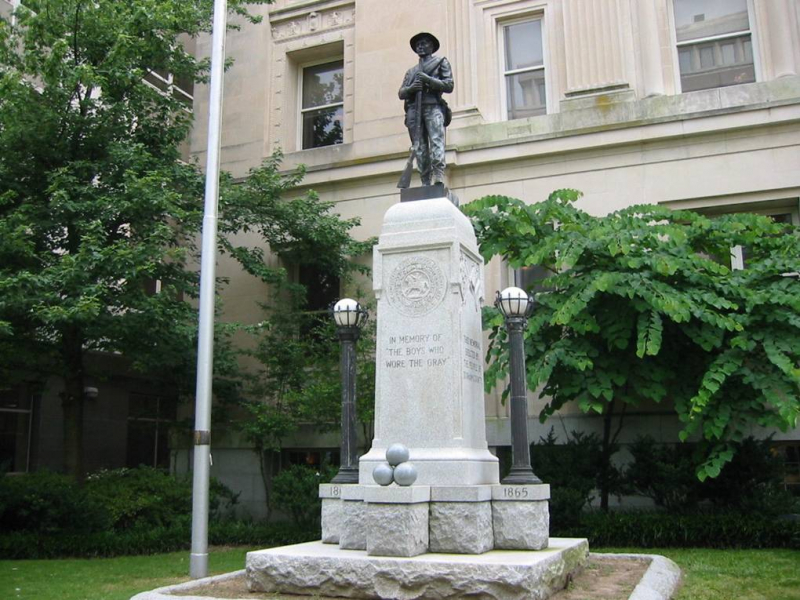
The monument before damage - wikimedia.org 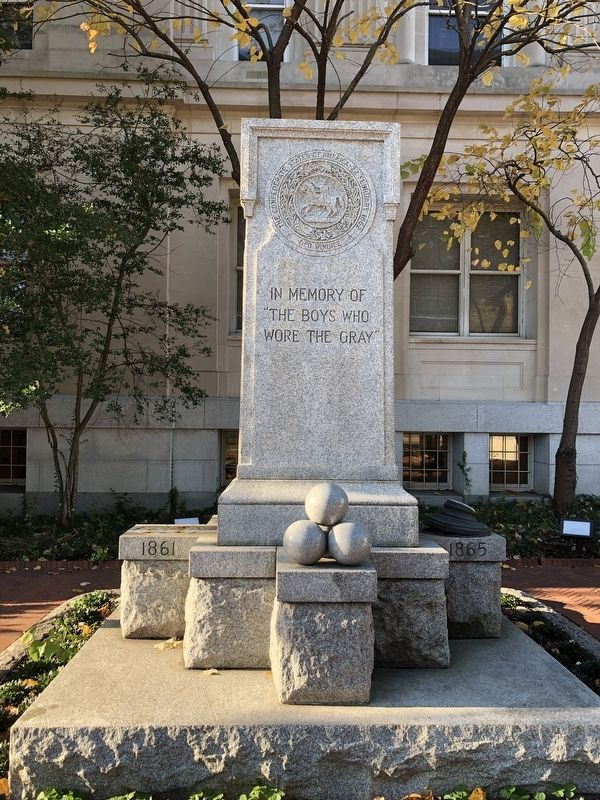
wikipedia.org -
The High Water Mark of the Rebellion monument is a monument on the Gettysburg Battlefield that features a large bronze tablet that lists the Confederate Army of Northern Virginia infantry attack units from the third day of the Battle of Gettysburg as well as the "respective troops who met or assisted to repulse Longstreet's Assault" from the Union Army of the Potomac.
The memorial is named after Pickett's Charge dead and wounded line, which at The Angle represented the point at which "4,500 soldiers lay down their arms and came in as captives" and which also symbolized the Union army's worst breach. Unit monuments, which also contribute to historic district structures, are now typically used to designate the line.
The Gettysburg Battlefield Memorial Association twice rejected Bachelder's memorial plan before finally approving it the third time. The monument, which was originally erected on April 27, 1892, was recast to include two missing units, and it was then dedicated with a speech by the then-former Governor Beaver urging that the battlefield be made into a National Park. Unknown to many, a plaque (MN389) was added to the memorial in honor of the directors of the Gettysburg Battlefield Memorial Association in 1895. Besides, the memorial is also the place that hosted an 1897 lecture by James T. Long to 7,097 visitors at The Angle.
In sum, the High Water Mark of the Rebellion monument:
- was built on April 27, 1892, after two times were rejected.
- in honor of the Confederate Army of Northern Virginia infantry attack units from the third day of the Battle of Gettysburg.
- a plaque (MN389) was added to the memorial to honor the directors of the Gettysburg Battlefield Memorial Association.
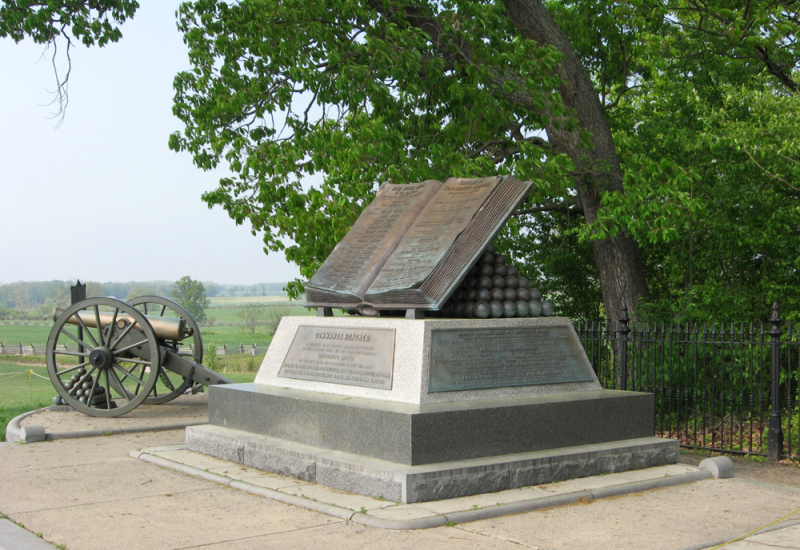
gettysburg.stonesentinels.com 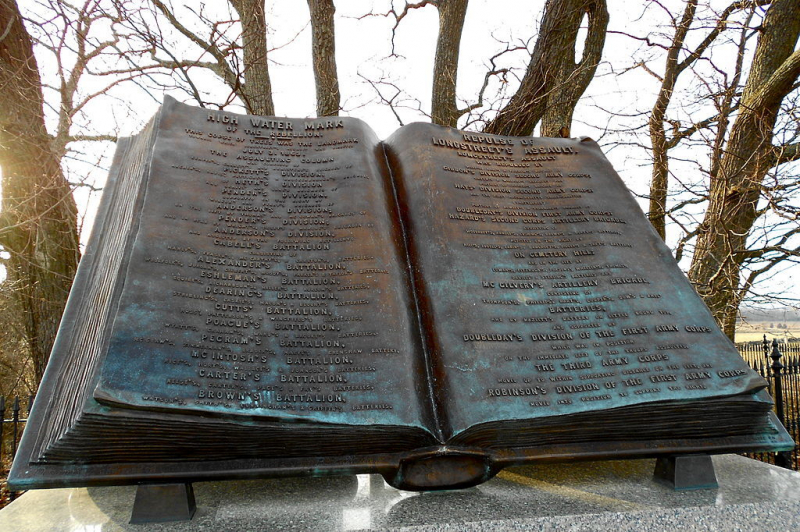
The front tablet is on a pedestal (bottom) in front of the Copse of Trees - wikipedia.org







